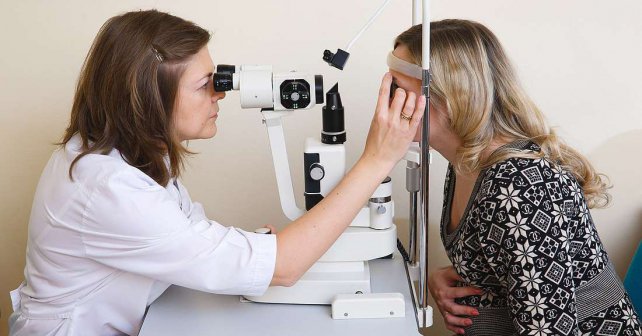Before prescribing effective treatment, the ophthalmologist must determine the degree of myopia. Mild myopia does not require treatment, the average degree of the disease is corrected with glasses and contact lenses.
Myopia can be called myopia in another way. In this disease, the formation of an image occurs in front of the retina of the eye. The most common cause of the disease is a defect in the eyeball, which is elongated in length.
Those with this pathology see well only at close range, often squint to focus their gaze. Myopias are congenital and acquired. The former is characterized by a congenital defect of the eyeball, the disease is capable of progressing over time.
Acquired myopia occurs after infectious diseases, or diseases affecting the metabolic processes of the body, for example, in the case of endocrine diseases and under the influence of external factors. As an example of the last case of myopia, a disease acquired at school when the blackboard or notebook on the desk is not sufficiently lit.
There are 3 degrees of myopia: weak, limited to 3 diopters; medium - from 3 to 6 D; and strong - over 6 D.

Treatment of the disease begins during the period of active growth of the body, namely in childhood and adolescence, when it progresses most. For this, the patient is taught special exercises that strengthen the optic muscle and also strengthen the ciliary muscle. Higher degrees require complex medical treatment, limitation of physical activity.
It happens that the development of the disease causes complications, in the form of cataract formation or retinal detachment. Such phenomena require surgical intervention. Most often, operations are resorted to if there is a history of high myopia. Surgical intervention is performed on the sclera, cornea and lens. The main goal of the operation is to reduce the refractive power of the eye and to strengthen the stretched posterior segment in the eyeball.
Corneal surgery helps at a stage in the development of the disease when it does not progress. During surgical interventions, a special bandage device is applied to the surface of the eye to prevent further stretching of the eyeball. Such operations are called scleroplastic and they are intended to prevent the progress of myopia and to restore vision correction.
For those who have myopathy in a high stage, intense physical activity is contraindicated. But this does not mean that it is required to completely abandon it. A specially designed set of exercises only limits physical activity in terms of the applied efforts, including exercises that increase the body's resistance.
Medium myopia is corrected with specific ciliary exercises, drugs, glasses and lenses. The most important thing is to stop the progression of the disease. Laser correction can be performed after 18 years of age, when the formation of the body as a whole, and in particular of the vision system, has ended.

Medication includes eye drops designed to relax the eye muscles and vasodilators. The former include: atropine, mezaton, mitriacil, the latter - cinoresin, piracetam, nootropil and the like.
If vision falls by more than a diopter per year, then you have to resort to surgery. Most often, scleroplasty is performed. Sometimes, with a moderate degree of myopia, the person suffering from the disease has to limit physical activity. Weak myopia is characterized by a slight deviation of vision, up to 3D.
Most often, it does not require special treatment. It is not always even considered myopia, it is often defined as an abnormality of vision. In children, the disease sometimes goes away on its own as the organ of vision forms, with the correct attitude of adults. They must constantly monitor that during the child's applied exercises, the light falls at the optimal angle, creating sufficient illumination.
Mild myopia may occur in women during pregnancy or hormonal changes. Weak myopia manifests itself in children and adults under the influence of external factors - long sessions with a computer, while reading small print. It is enough to correct myopia to this degree with glasses or contact lenses. The disease does not require restrictions on physical activity.
Myopia is detected using a special examination, which includes an initial examination by an ophthalmologist, during which visual acuity, its field and intraocular pressure are determined. Then an ultrasound examination of the organ of vision is carried out, the thickness of the cornea and the length of the eye are measured, and the level of tear production is determined. Also examines the fundus and prescribes computer keratotopography.

